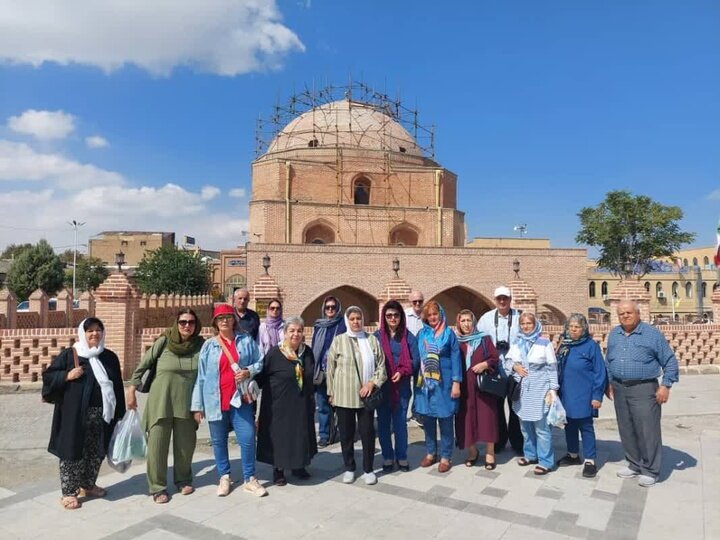Armenian group visits historical sites in northwest Iran

TEHRAN - A group of Armenian nationals recently visited historical and religious sites in West Azarbaijan province as part of a familiarization tour organized by the provincial Department of Cultural Heritage and Tourism.
The tour, held in conjunction with Iran’s National Tourism Week, aimed to showcase the rich cultural and religious heritage of the region, a local official said on Monday.
Reza Heidari stated that the Armenian tourists participated in religious ceremonies related to the Armenian community in the province. They also visited various historical landmarks, including churches and other cultural sites.
The attractions explored by the group included the Jameh Mosque of Urmia, St. Mary Church, the picturesque village of Gurchin Qaleh in Urmia, and a centuries-old bazaar.
Additionally, they visited the St. George Church in Haftvan as well as churches in the village of Mahlum and several historic churches of Khoy.
Heidari also noted that earlier this year, in September, a large number of Christians, particularly from Armenia, traveled to West Azarbaijan to attend the annual “Badarak” religious ceremony at the UNESCO-listed Qara Kelisa (St. Thaddeus Monastery) in Chaldoran.
These events have helped strengthen cultural and religious ties between Armenia and Iran, the official underlined.
West Azarbaijan embraces a variety of lush natural sceneries, cultural heritage sites, and museums including the UNESCO sites of Takht-e Soleyman and Qareh Klise (St. Thaddeus Monastery), Teppe Hasanlu, and the ruined Bastam Citadel.
The provincial capital of Urmia, also spelled Orumiyeh, lies just west of Lake Urmia on a large fertile plain that yields grains, fruits, tobacco, and other crops. The population is mainly Azeri Turkish, with Kurdish, Assyrian Christian, and Armenian minorities. The remains of ancient settlements are scattered over the plain, as are traces of the ancient kingdom of Urartu.
The Azarbaijan region was home to several ancient civilizations. According to Britannica, it was conquered by Alexander the Great in the 4th century BC and was named Atropatene after one of Alexander’s generals, Atropates, who established a small kingdom there. Ultimately, the area returned to the Persian (Iranian) rule under the Sasanians in the 3rd century CE.
AM
